Bi-weekly aquarium maintenance
Believe it or not, before I ever started my own aquarium, when it comes to cleaning the aquarium, I have the thinking that I should scoop out all the fished from my aquarium, throw away the water, remove everything from aquarium, give it a good scrub and wash, assemble everything back, put the water in back, and lastly, put the fish back. And believe it or not, this thing is actually the thing that put me off when I have a thought of setting up my own aquarium, since it looks so troublesome.
And again, I found this completely wrong under normal circumstances. Why?
- Scooping out fish – this will stress the fish a lot. Poor fish!
- Pouring out all water – you are throwing the water that the chemistry is in balance with the fish, where the fish is already comfortable in
- Scrub and wash all ornaments in the aquarium – you are actually scrubbing out the beneficial bacteria that has developed on the surface, and also most likely you will be doing the wash under tap water, which contain chlorine, and will kill all of our beneficial bacteria
- Assemble everything back, put the water in back – you have killed all benefical bacteria before, and your aquarium has to go the cycling process again.
- Put the fish back in – poor fish again. It is just another stressful moment adjusting itself to the new water chemistry, and exposed to ammonia and nitrite before the cycle process finished
Doing aquarium maintenance actually is not that hard. The hard thing is to make it as part of your habit. For that reason, I’ve created a reminder in my O2 Mini Calendar, to remind me when to do maintenance to my aquarium.
I’ve read a few suggestions of how weekly maintenance should be done. There are come websites telling to change 10% of water every week. There are also some telling to change 20% of water every week. And there is also one website telling to do 20% water change every 2 weeks. In my case, since I have small number of small fish, with live plant inside (that will use nitrate from the final phase of nitrification process), I choose to do 20% water change every 2 weeks, and I choose Friday since the next day is public holiday to me.
Got the above reminder last night while I was about to go out. I have visitors coming from Penang, and I guess I can’t do water change last night, so I postponed it for today.
The first thing that I do for my aquarium maintenance is to vacuum the substrate. Vacuuming the substrate is done using a special tube that can be bought at any aquarium shop that works on siphon principle.
Siphoning the debris will also remove water from the aquarium, and this will be part of the 20% water change. Why this water change is needed? From my previous post, nitrification process will produce nitrate at the last stage. Nitrate is also dangerous to fish in large quantity. So the 20% water change will lower down the quantitiy of nitrate in the water. And it also will lower any other trace element that is harmful to the fish (from the excess food decaying)
And how much 20% is? Well. It depends on your aquarium volume. If your aquarium shape is rectangular, it is easy to find out how my 20% is. Just measure the depth of the water. 20% water change is removing the water so that its depth is 20% lower than the previous depth.
My aquarium water depth is 43cm. So 20% from 43cm is 8.6cm. So I will siphon out the water until is has the depth of 34.4cm.
Then I replace the water that I siphon out with the tap water that I treat with anti-chlorine. From my reading, it is suggested to get a bit higher grade anti-chlorine that will remove chloramines as well. Normal anti-chlorine only removes chlorine gas from the tap water, but not chloramines. I’m using Wardley Chlor Out for this purpose.
And I never believe any guarantee that the product will instantly remove chlorine from the water. If it’s not, you are putting the risk of killing all the beneficial bacteria that has already established in the aquarium.
What I usually do is to put the water in the bucket, put a few drop of Chlor Out, and do water aeration – i.e. passing the air to the water using air stone. The air bubble that rise to the surface will also release chlorine gas from the water, and the water movement that the bubble will oxygenate the water at the same time. I let the aeration to go for 1 day. And I usually do this several days before the water change. Just to make sure all chlorine is out from the water.
Next step is to add 5ml of Bio-Booster to the water. This solution will actually boost the population of beneficial bacteria in the water, that is part of biological filter.
I pour it right into my external filter, where my bio rings are.
And lastly, I put 1 drop and plant food. It contains all the trace elements that plants need. Be carefull with this one. Not to overdose, and it will introduce too many trace elements inside the water that is harmful to fish. But my bi-weekly water change will handle any unused trace elements that keep increasing in the water.
As you can see, I didn’t really do the filter maintenance during my bi-weekly maintenance. I only clean the filter once a month, since it is not advisable to regularly clean the filter, as it will interrupt the bio filter process. I will blog about this when the time has come for me to clean the filter and filter media.









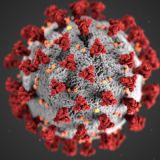

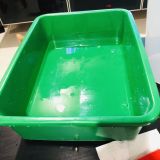
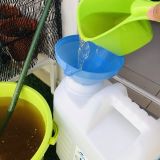
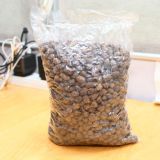
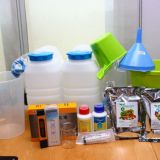
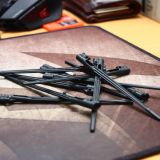

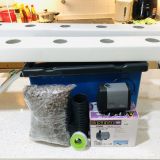
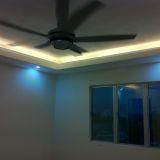
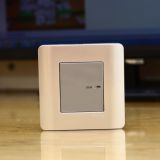

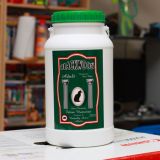

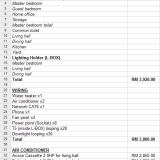


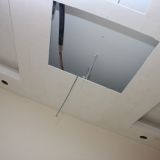

alalalaa… kiutnye aquarium tu! eh, ikannya mana? tak nmpk punnn..
eh adalah… bela ikan kecik2 je. try click gambar aquarium tuh, pastu view larger size. mesti nampak ikan2 tu 😉